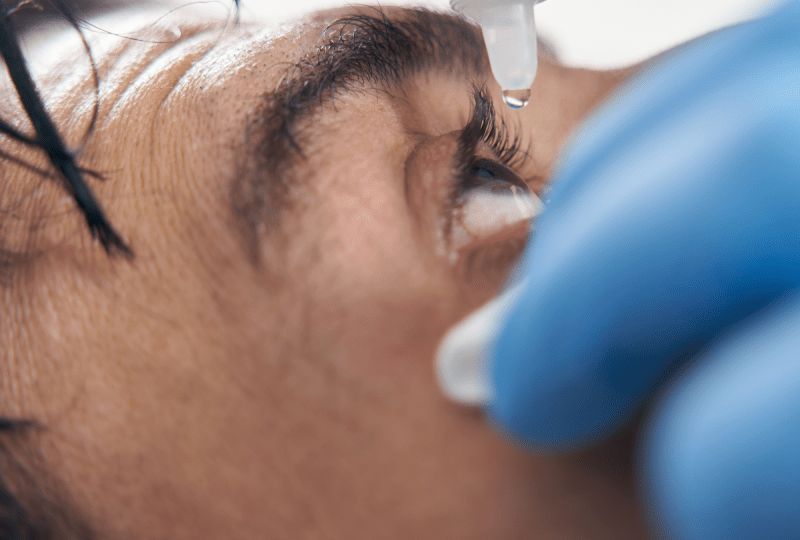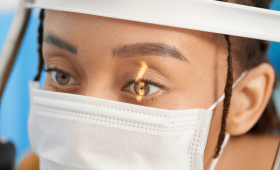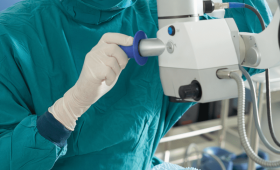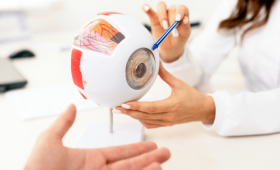Eye health is of vital importance for our quality of life. Thanks to modern medicine and technology, many eye problems that seemed unsolvable in the past can now be successfully treated. This guide covers all the details of eye treatment processes, from the most common applications to the recovery period. If you want to improve your eye health and look at the world more clearly, this guide will show you the way.
Overview: The Importance of Eye Health
Eyes are the gateway to the world. Our vision allows us to interact with our surroundings, learn, and maintain our daily lives independently. Unfortunately, eye health is often overlooked. However, regular eye exams and necessary treatment processes are the most effective way to prevent vision loss and correct existing problems. Early diagnosis increases the success of treatment for many eye diseases. Investing in the health of our eyes is an investment in our future.
What is the Eye Treatment Process?
The eye treatment process is a holistic approach that extends from the diagnosis of a patient’s eye condition to the determination of the appropriate treatment method and post-recovery follow-up stages. This process can include not only surgical operations but also drug treatments, laser applications, and even lifestyle changes. The treatment plan for each patient is specially prepared according to their personal needs and the degree of the disease.
Common Eye Problems
Today, the most common eye problems include refractive errors such as myopia (nearsightedness), hyperopia (farsightedness), astigmatism (blurry vision), and presbyopia (age-related farsightedness). In addition, cataracts, glaucoma, dry eye syndrome, and retinal diseases can also cause serious vision problems. Each of these conditions requires different treatment methods.
LASIK Eye Surgery
LASIK (Laser-Assisted in Situ Keratomileusis) is the most commonly used laser eye surgery for treating refractive errors. This operation changes the shape of the cornea, allowing light to focus correctly on the retina. LASIK is a painless and fast procedure, and patients usually experience a significant improvement in vision within the first 24 hours after surgery. It is a popular option for those who want to say goodbye to glasses and lenses.
Cataract Surgery
Cataract is an eye disease that occurs when the natural lens inside the eye becomes cloudy over time. Cataract surgery involves replacing the cloudy lens with an artificial, clear lens (intraocular lens). This surgery is usually completed in a very short time under local anesthesia. It significantly restores vision and is one of the most frequently performed successful surgical operations worldwide.
Intraocular Lens (IOL) Implantation
Intraocular Lens (IOL) implantation is an option for patients with high-numbered refractive errors or who are not suitable for LASIK. In this method, a permanent lens is placed in front of or behind the existing natural lens. IOLs are custom-made according to the patient’s vision needs and can correct myopia, hyperopia, and astigmatism at the same time. This procedure provides a permanent and effective vision correction.

Glaucoma (Eye Pressure) Treatment
Glaucoma is a disease that causes damage to the optic nerve and is usually associated with high intraocular pressure. The goal of glaucoma treatment is to slow down or stop nerve damage by lowering intraocular pressure. Treatment usually begins with eye drops. In cases where drug treatment is insufficient, laser or surgical intervention may be required. Early diagnosis is critical to prevent vision loss.
Retinal Diseases and Treatments
The retina is the light-sensitive tissue at the back of the eye and is vital for vision. Diseases such as diabetic retinopathy, macular degeneration, and retinal detachment can lead to serious vision loss. The treatment of these diseases may include laser applications, injections (intraocular injection), or complex surgical operations. Retinal treatments aim to preserve vision and stop the progression of the disease.
Strabismus Surgery
Strabismus is a condition where the eyes cannot focus on the same point at the same time. Treatment is usually done with surgeries to strengthen or weaken the eye muscles. The surgery provides an aesthetic appearance by aligning the eyes and eliminates problems such as double vision. Strabismus surgeries performed in childhood, in particular, give more successful results.
Dry Eye Syndrome and Treatment
Dry eye syndrome occurs when the eyes do not produce a sufficient amount or quality of tears. Treatment is usually done with artificial tear drops, warm compresses, or special eye drops. In severe cases, punctal plugs that block the tear ducts or surgical procedures may be applied. As it is a chronic condition, it requires regular follow-up and treatment.
Blepharoplasty (Eyelid Aesthetics)
Blepharoplasty is an aesthetic surgical procedure aimed at removing sagging upper eyelids and under-eye bags to give a younger and more rested appearance. This procedure not only addresses aesthetic concerns but also corrects sagging lids that restrict the field of vision. It is performed under local anesthesia, and patients recover in a short time.
Under-Eye Bags and Their Treatment
Under-eye bags can cause a tired and old appearance. In addition to blepharoplasty, laser applications, filler injections, or special skin care products can also be used in the treatment of under-eye bags. Which method will be applied depends on the size and cause of the bag.
Laser Technologies Used in Eye Treatment
Laser technologies used in eye treatments have made surgeries more precise, fast, and safe. Excimer laser (LASIK), femtosecond laser (LASIK flap creation), YAG laser (post-cataract capsular opacification), and Argon laser (retinal treatments) are among the most common types of lasers. Laser technology provides excellent results with correct diagnosis and application.
Eye Examination and Diagnosis Process
The first and most important step of the eye treatment process is a detailed eye examination. This examination includes steps such as a visual acuity test, intraocular pressure measurement, fundus (retina) examination, and detection of refractive errors. Additional tests required for diagnosis (eye tomography, corneal topography, etc.) are performed. An accurate diagnosis ensures the creation of the most suitable treatment plan.
Pre-Treatment Preparations
Patients need to make certain preparations before eye treatment. It is important to stop using contact lenses before surgery, discontinue blood thinners, and use eye drops regularly as recommended by the doctor. Makeup and perfume should not be used on the day of surgery. These preparations increase the success of the operation.
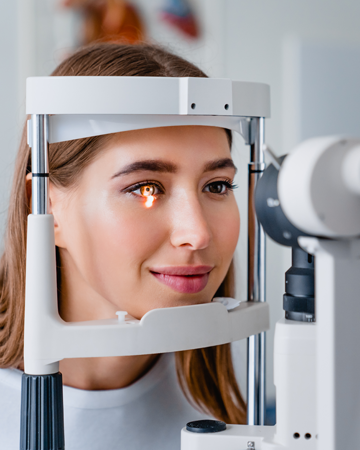
How Long Does the Eye Treatment Process Take?
The duration of eye treatments varies greatly depending on the method to be applied. While laser operations like LASIK take only a few minutes for each eye, the recovery process is completed within a few days. Cataract surgeries also usually take 15-20 minutes. More complex retinal or strabismus surgeries may take longer.
Anesthesia Applications
Most eye surgeries are performed under local anesthesia for the patient’s comfort. Local anesthesia numbs the area around the eye, and the patient does not feel any pain during the procedure. In cases where the patient is anxious or for child patients, sedation or general anesthesia may also be preferred.
Pain and Recovery Process
Pain after eye surgeries is usually minimal or nonexistent. There may be a slight stinging or watering sensation for the first few hours after the surgery. The recovery process varies depending on the method applied. After laser surgeries, patients can usually return to their normal lives within a day. For other operations, the recovery process may be longer.
Post-Treatment Care and Recommendations
Post-eye treatment care directly affects the success and longevity of the treatment. The eye drops recommended by the doctor should be used regularly, eyes should not be rubbed, and they should be protected from impacts. Swimming pools and strenuous exercise may need to be avoided for a certain period. Regular check-ups are important for monitoring the recovery process.
Advantages of Eye Treatments
Eye treatments significantly improve the quality of life by correcting vision. Getting rid of dependence on glasses and lenses offers the opportunity to do sports and hobbies more comfortably. For many people, this also provides great aesthetic and psychological relief. Eye surgeries are a window to a clearer world.
Possible Risks and Disadvantages
Like any surgical procedure, eye treatments also have some risks. These can be infection, dry eyes, light sensitivity, or permanent changes in vision. However, with modern technology and experienced doctors, these risks have been minimized. The patient’s compliance with the doctor’s instructions is the most important factor in reducing risks.
Why are Eye Treatments Popular in Turkey?
Turkey has become a globally recognized center for eye treatments. The main reasons for this include expert surgeons with international experience, modern clinics with the latest technology, and more affordable prices compared to Europe. Turkey offers the opportunity to combine eye treatment with a historical and cultural tourism experience.
The Eye Treatment Experience with Cure Holiday
Finding the right place to entrust your eye health is vital for the success of the treatment. This is where Cure Holiday comes in. Cure Holiday is a health tourism partner that offers special solutions for your eye health needs. It plans not only your treatment process but also all your travel and accommodation arrangements. It thinks of all the details, such as airport transfers, comfortable hotel stays, and city tours after the treatment. This way, you can focus solely on your health.
Real Patient Stories
One of the best ways to understand the transformative effect of eye treatments is to listen to real patient stories. The stories of patients who got rid of their glasses, saw the world in color again after cataract surgery, or rejuvenated with eyelid aesthetics show how life-changing these treatments can be. You can find such inspiring stories and patient reviews on Cure Holiday‘s website.
Contact Cure Holiday
Your eyes are your most valuable asset for exploring the world. If you have concerns about your eye health or are looking for a new treatment, now is the time to act. Cure Holiday is ready to provide you with the best service in the field of eye health. With its expert physicians, state-of-the-art clinic infrastructure, and impeccable customer service, it provides an environment where you can entrust your eyes with confidence. Take the first step by visiting their website or contacting them directly and say hello to a clearer future.
